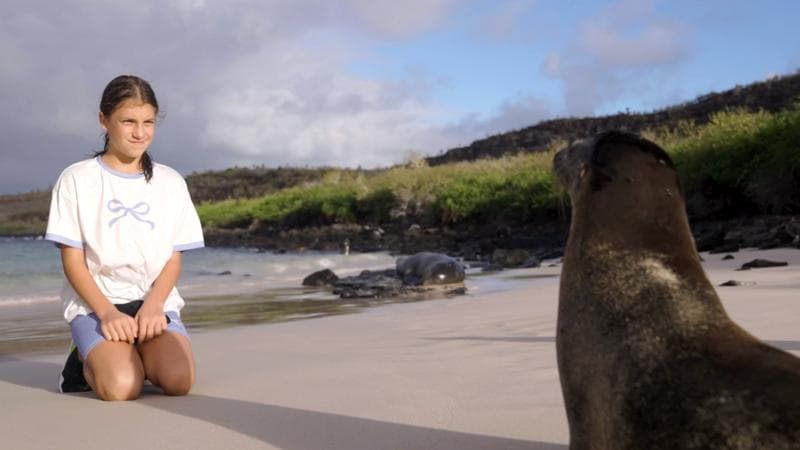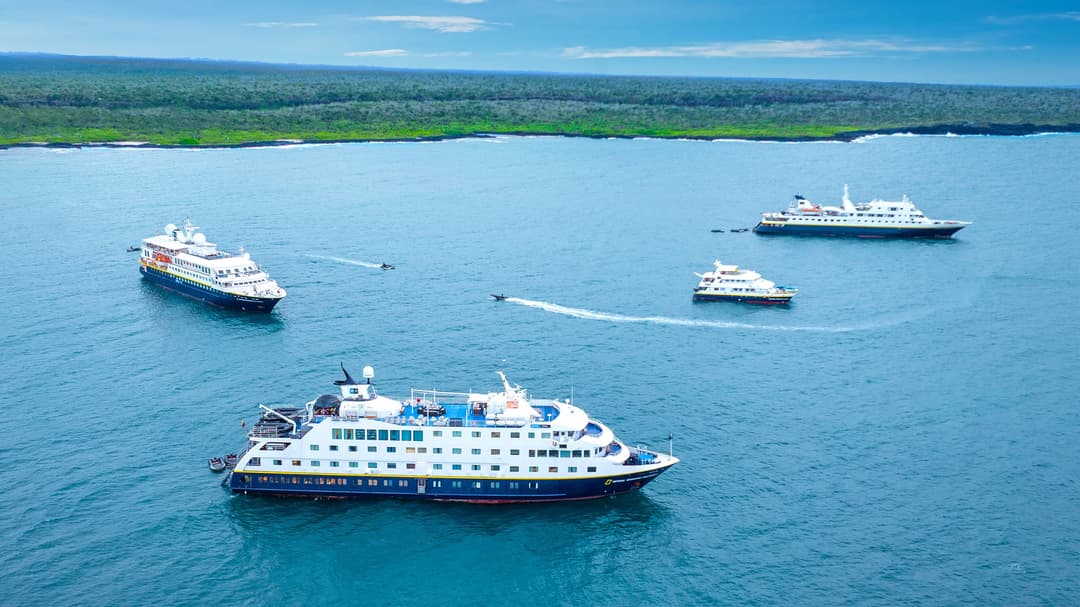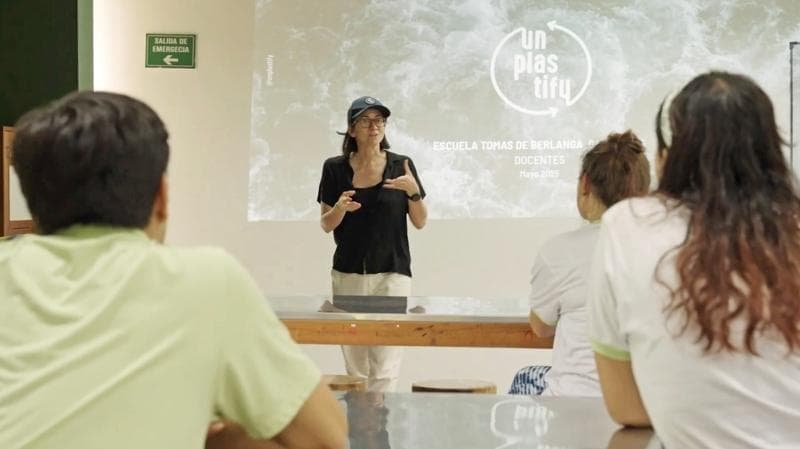Oddities of Evolution: 8 Fascinating Facts About Galápagos Wildlife

Isolated from mainland influence, oceanic islands have a reputation for harboring strange species. After all, every endemic creature descended from a rag-tag bunch of castaways that flew, swam or floated to their far-off shores. On the Galápagos Islands, an archipelago 600 miles from the nearest coast in Ecuador, this once-barren outpost of lava rock has morphed into a hotspot of evolutionary marvels.
Here, where tropical climes converge with active volcanoes and ever-changing ocean currents, survival was no easy feat. The most resilient new arrivals rose to the challenge, populating the islands with amazing anomalies like seafaring lizards, towering daisy trees and vampire finches—and inspiring one Charles Darwin to develop his theory of evolution through natural selection.
Genomic technology has come a long way since Darwin’s day, enabling scientists not only to discover and declare new species, but to tell more complete stories of how evolution shapes our world. We spoke with Expedition Leader Emma Ridley about the most wonderfully weird wildlife and the latest findings from this awe-inspiring “living laboratory.”
Marine iguanas can shrink to survive food scarcity—and then grow back.

An adult male marine iguana crawls under water off Fernandina Island. Photo: Michael S. Nolan
The world’s only ocean-going lizard has many adaptive traits that allow it to forage for the red and green algae that make up the majority of its diet: long, sharp claws to cling to rocks in the surf; darker coloration to warm up more quickly post-dive; and specialized glands for desalination. However, the most incredible adaptation may be the marine iguana’s capacity to contract and expand its spine.
For better odds of survival during El Niño events, certain populations have been found to break down bone tissue, reducing their body length as much as 20 percent in just two years. When the waters cool enough for their algae buffet to return, they can regrow the tissue again.
One of the most recently identified species, the pink land iguana, is actually one of Galápagos’ oldest endemic reptiles.

The pink land iguana is one of oldest endemic reptile species in Galápagos, but was first spotted on the archipelago's youngest island, Isabela.
When this extraordinary iguana was first spotted atop Wolf Volcano in 1986, scientists initially dismissed it as a discoloration, possibly due to damage from volcanic fumes. It wasn’t until 2009 that biologist Gabriele Gentile found this was “a completely different branch of land iguanas,” Ridley says, “and that it branched off earlier than the others.”
In fact, the divergence dates to approximately 5.7 million years ago, before the archipelago even existed. This is why its limited range is such a conundrum to researchers—Isabela is one of the youngest islands, geologically speaking.
The only fully nocturnal gull on the planet may use echolocation.

A swallow-tailed gull perches on a rock on Española Island. Photo: Michael S. Nolan
A 2025 study used GPS tracking to confirm the swallow-tailed gull’s exclusively nocturnal foraging behavior, which even synchronizes with lunar cycles. The gulls eat squid and other deep-sea dwellers that surface in the cover of darkness to feed on plankton, so new moon nights are particularly bountiful.
These striking gulls have red-ringed eyes, which have evolved large corneas to see in the dark—but vision might not be the only sense helping them hunt. “At night when you’re sailing, you’ll hear this clicking sound and see the white, ghostlike figures escorting the ships around the islands,” Ridley says, adding that the crackling calls are still a mystery to scientists, but some suspect a form of echolocation.
Galápagos penguins override their biological clocks to breed in sync with oceanic currents.

Galápagos penguins will alter the timing of their breeding seasons to survive El Niño. Photo: Ralph Lee Hopkins
The sole penguin species living above the equator, most Galápagos penguins live on Fernandina and the western coasts of Isabela, where upwelling currents keep the waters cool and highly productive. The equatorial sun, however, can be unforgiving. To avoid overheating, they’ve adapted to a smaller size with less fat insulation. They’re even known to pant, just like dogs do, for thermoregulation.
While these traits are shared by other penguin species inhabiting higher latitudes, there’s one unique behavior that has only been observed in the 2,000 individuals in Galápagos. Instead of adhering to a fixed breeding season, they can delay molting and mating until their diets are rich enough in nutrients to set the whole family up for success—a critical strategy for surviving El Niño.
The flightless cormorant’s genetic makeup may hold insights into bone disorders in humans.

Two flightless cormorants on Fernandina Island. Photo: Ralph Lee Hopkins
In the absence of large land predators, flightlessness is a common adaptation on oceanic islands. “Flight is very costly,” Ridley says, “so if you don’t need to fly to feed or migrate, getting rid of flight makes sense.” However, unlike New Zealand’s kiwis or Patagonia’s rheas, which have been ground-bound for many millions of years, the cormorants of Galápagos only diverged from their flighted ancestor within the past two million years—a relative blip in evolutionary terms.
In 2017, researchers were able to isolate a distinct genetic signature that regulates the formation of cilia (microscopic “hairs” that serve as crucial chemical messengers for bone development). These same genetic anomalies are responsible for bone-growth disorders called skeletal ciliopathies in humans, meaning further connections—and potential cures—could be possible through continued research.
Galápagos giant tortoises are far more biodiverse than we realized.

Researches are learning that each island in Galápagos may have endemic tortoise species that adapt based on their environment.
It has long been believed that these gentle giants all speciated from the same common ancestors with a dome-shaped shell, with those on arid islands developing elongated necks and notched “saddleback” carapaces to reach higher vegetation. But a groundbreaking genome sequencing study revealed 13 distinct genetic lineages, with differences so significant that reclassification may be necessary.
Now, researchers are exploring the possibility that each island’s unique environment determined which extant species were able to thrive there—and that the tortoises may be largely to thank for such wide-scale variation in their vegetation. “The saddleback tortoises had this kind of evolutionary ‘arms race’ with the prickly pear cactus,” Ridley says. “Normally a shrub, it has evolved into big, woody trees, probably due to grazing pressure from the tortoises.” On Española, these ecosystem engineers trample low brush into grasslands, effectively clearing runways for the critically endangered waved albatross to safely land and breed.
Terrestrial racer snakes are slithering into the sea to fish.

Usually hunting on land, Fernandina racer snakes have been found to occasionally catch fish in the shallows off their namesake island. Photo: Michael S. Nolan
The Fernandina racer was known to hunt lava lizards, geckos, rodents and, most famously, marine iguana hatchlings (as demonstrated in this viral video). Then, in 1995, naturalist Godfrey Merlen watched one descend into the shallows and emerge with a fish clenched in its jaw.
He documented the behavior—something no other land snakes have been observed doing anywhere else in the world—in as many as 15 individuals in the lava rock pools of the intertidal zone. In 2015, Merlen returned with a BBC crew to capture the phenomenon on film and found that each snake appears to lay claim to its own “fishing patch,” though they sometimes feed together.
Darwin’s finches are proving him wrong about the timeline of evolution.

The finches of Daphne Major have shown that the species evolves much faster than scientists previously thought.
Charles Darwin hypothesized that evolution occurs too slowly to be studied or observed in real time. For the most part, the data upheld his theory of gradualism; one species of finch diversifying into 17 in less than one million years seemed a remarkable feat. Then, evolutionary biologists Peter and Rosemary Grant, who have spent decades studying the finches of Daphne Major with students and colleagues, determined in 2017 that distinct species can emerge in as few as two generations.
Most recently, they determined that natural selection of long-lived birds can be witnessed, measured and interpreted in just a few years. During a two-and-a-half-year drought, the average beak and body size of the island’s medium ground finch population became significantly smaller after its larger members were outcompeted for food by another finch species.
Featured Itineraries
Related Articles


